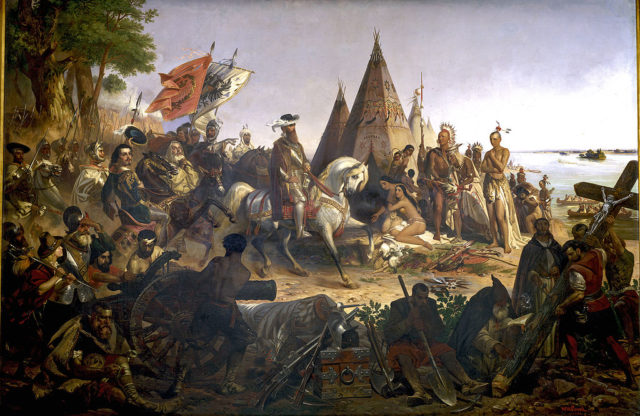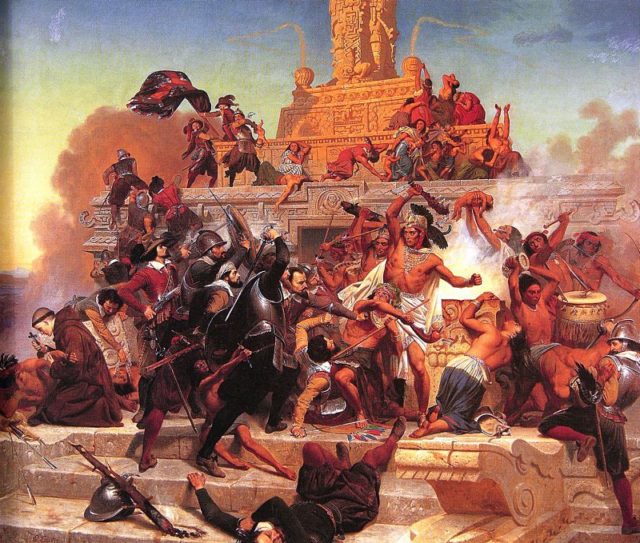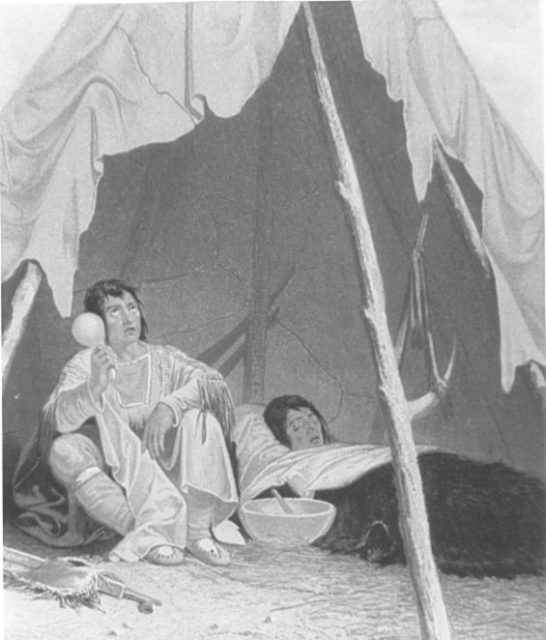Large scale declines in Native American populations appear to have happened at least a century later than first thought. New findings from the National Academy of Sciences contradict the previous idea that Christopher Columbus brought the devastating diseases to the Americas.
In the Southwest, the first contact between Europeans and the Native population happened in 1539, but the scientists found that the major effect of diseases didn’t happen till 1620. The Native population had no natural immunity to any diseases brought in by the Europeans. When disease did strike, the effect was rapid, and the population dropped sharply in the years between 1620 and 1680. Approximately 87% of the Native populations died in that time period. This would have had a devastating effect, not only on the survivors but on their social structure, since they would have lost nearly everyone who knew their traditional medicine and religion, and their leaders and skilled members of society would have died. Most of their culture, history, and heritage would have been lost this way.

To try to find answers, since there are so many conflicting theories on what happened, researchers are studying tree-ring data and archaeological information, as well as using airborne light detection data to take detailed images of the landscape. The goal is to develop estimates of the population to figure out the losses on a regional scale. The scientists studied 18 Pueblo villages in the Jemez Province of New Mexico, and they found that the villages went from 6,500 people to less than 900 in only 60 years. Using data from historical documents as well as their on-site investigations, researchers have linked this rapid decrease in population to the establishments of mission churches.
Europeans bought these people not only the word of God, but infectious diseases such as the bubonic plague, smallpox, influenza, measles, typhus, scarlet fever, yellow fever, diphtheria, chicken pox, and whooping cough. On top of all this, as Europeans settled in they bought violence and famine to the Native Americans.

As the populations shrunk, the land around the settlements changed. Land that used to be cleared for farming grew back into the forest. As the forest grew back, this created more forest fires due to natural means like lightning strikes.
There has been evidence to show that CO2 levels dropped in these areas, Mail Online reported.

In North America, the Native population was estimated as being between 2 to 18 million when Columbus arrived, and by the end of the 19th century, it was 530,000.
Read another story from us: Photos of Native Americans who performed in “Buffalo Bill’s Wild West”
Theories still abound about what actually happened and when it did occur. It is clear, however, that the meeting of the two groups of people did had catastrophic results for the Native people of the Americas.
